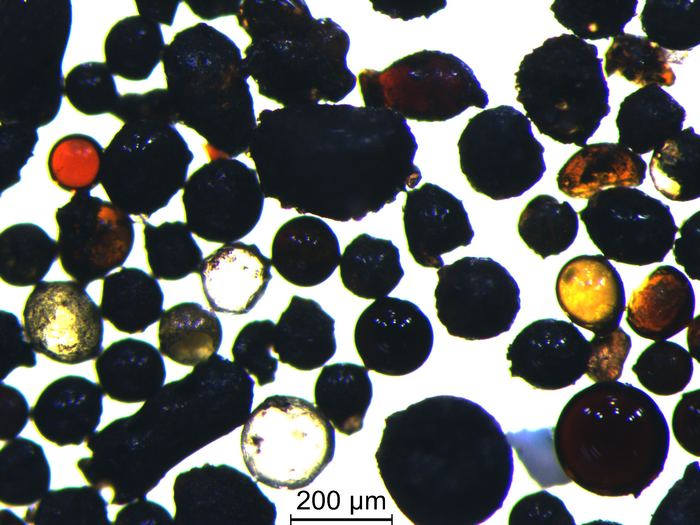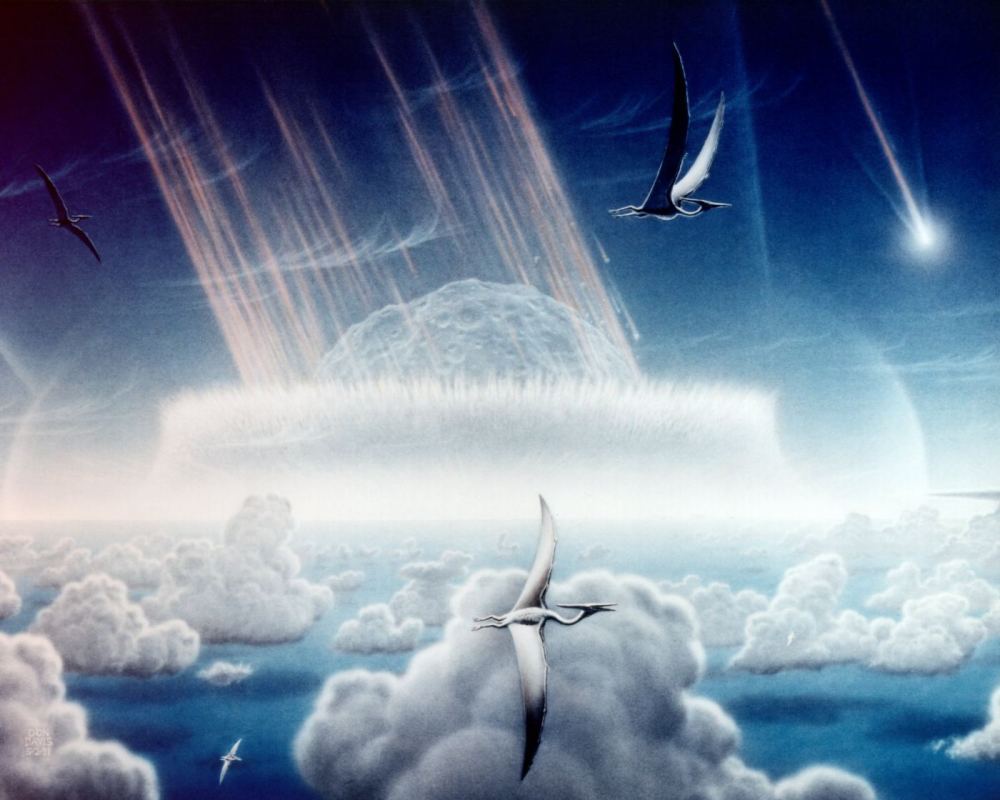It only takes a quick look at the Moon to see its impact-beaten surface. There are craters everywhere. Some of those impact sites apparently date back to the same time some very large asteroids were whacking Earth. One of them formed Chixculub Crater under the Yucatan Peninsula. That impact set in motion catastrophic events that wiped out much of life on Earth, including the dinosaurs.

That’s the conclusion a group of Australian scientists came to after studying glass beads from the Moon. They outlined their findings in a paper about the science they performed on samples picked up from the Moon by the Chang’e 5 Lunar mission. The beads were created by the heat and pressure caused by meteoritic impacts on the Moon. The lead author of the paper, Professor Alexander Nemchin, from Curtin University’s Space Science and Technology Centre (SSTC) in the School of Earth and Planetary Sciences, said the findings imply that the timing and frequency of asteroid impacts on the Moon may have been mirrored on Earth. If so then the find tells us more about the history of the evolution of our own planet.
“We combined a wide range of microscopic analytical techniques, numerical modeling, and geological surveys to determine how these microscopic glass beads from the Moon were formed and when,” Professor Nemchin said. “We found that some of the age groups of the lunar glass beads coincide precisely with the ages of some of the largest terrestrial impact crater events, including the Chicxulub impact crater responsible for the dinosaur extinction event.”

Looking at the Earth/Moon Asteroid Bombardment Coincidence
The team looked at the idea that large impacts, such as the Chixculub event, were accompanied by smaller impacts. The event that led to Chixculub’s formation happened about 66 million years ago. If the “big one” aimed at Chixculub had company, then it’s a good idea to look at the Moon, too. The ages and frequencies of impacts on the Moon around the same time might give clues to bombardments on Earth and the other inner solar system planets.
The death of the dinosaurs is one of the most fascinating stories to spring from Earth’s ancient geological history. The story goes (and there’s geological evidence to back it up) that an impact was certainly part of the story. Some 65 million years ago, Earth was basking in the Cretaceous period. Dinosaurs had been roaming the planet for about 165 million years. They still reigned across the globe along with some of the earliest mammals and other forms of life. However, the number of dinosaur species was starting to shrink. At the same time, some pretty severe volcanic eruptions were affecting Earth’s atmosphere and surface.
That Asteroid Likely Had Company
The asteroid that set off the extinction, not just of dinosaurs, but other species, left behind evidence. It’s in the form of a layer of iridium in geological strata around the world. That layer dates back to around 66 million years ago. Asteroids are rich in iridium. Finding it provided “smoking gun” evidence something from space helped hasten the demise of 75 percent of life on Earth way back then. At the same time the Chicxulub impactor hit, something excavated several other craters around the planet. This suggests that multiple impactors—possibly from the same parent asteroid—smacked into Earth, too. So, it’s not a big leap to find evidence of impacts on the Moon from objects in the same asteroid swarm.
Co-author Associate Professor Katarina Miljkovic, also from Curtin’s SSTC, said future comparative studies of the lunar samples could also add to our store of knowledge about the Moon’s geological history. “The next step would be to compare the data gleaned from these Chang’e-5 samples with other lunar soils and crater ages to be able to uncover other significant Moon-wide impact events which might, in turn, reveal new evidence about what impacts may have affected life on Earth,” she said.
So, the death of the dinosaurs and the mysterious glass beads are likely related. They both speak to a larger bombardment event that involved both Earth and the Moon.


I don’t want to add to any tinfoil hat theories but does anyone else find it odd that it took a small rover 60 years later to collect samples that have glass beads? Didn’t the Apollo missions return a substantial amount of samples? Was the region the manned landing took place devoid of asteroid evidence?